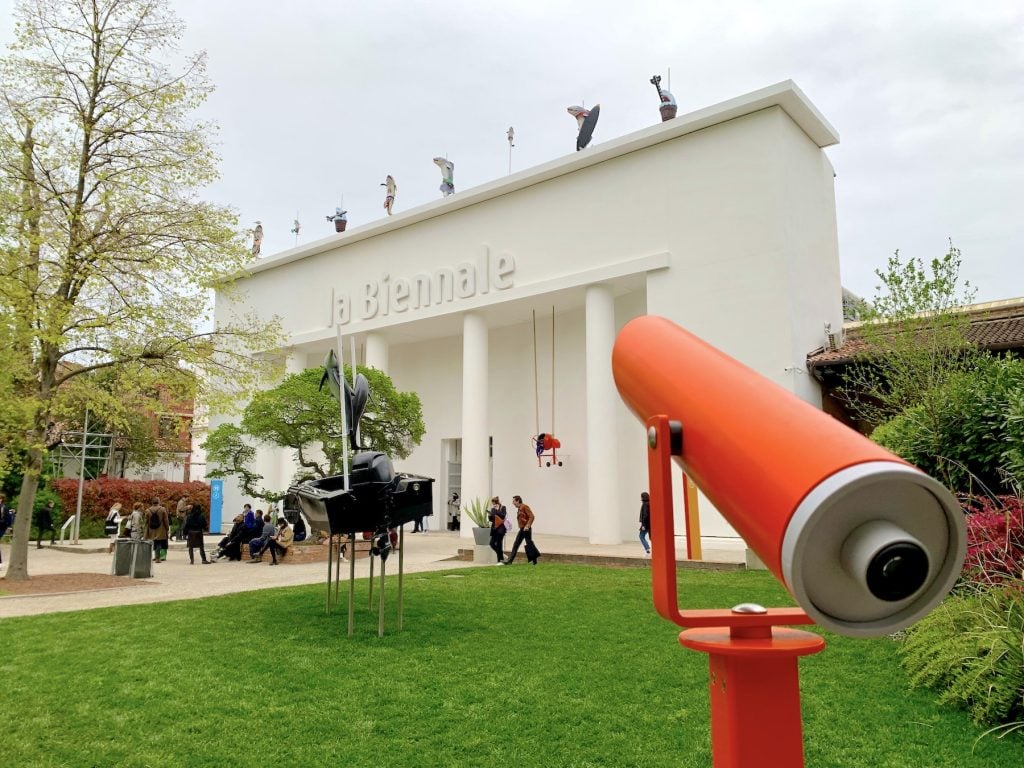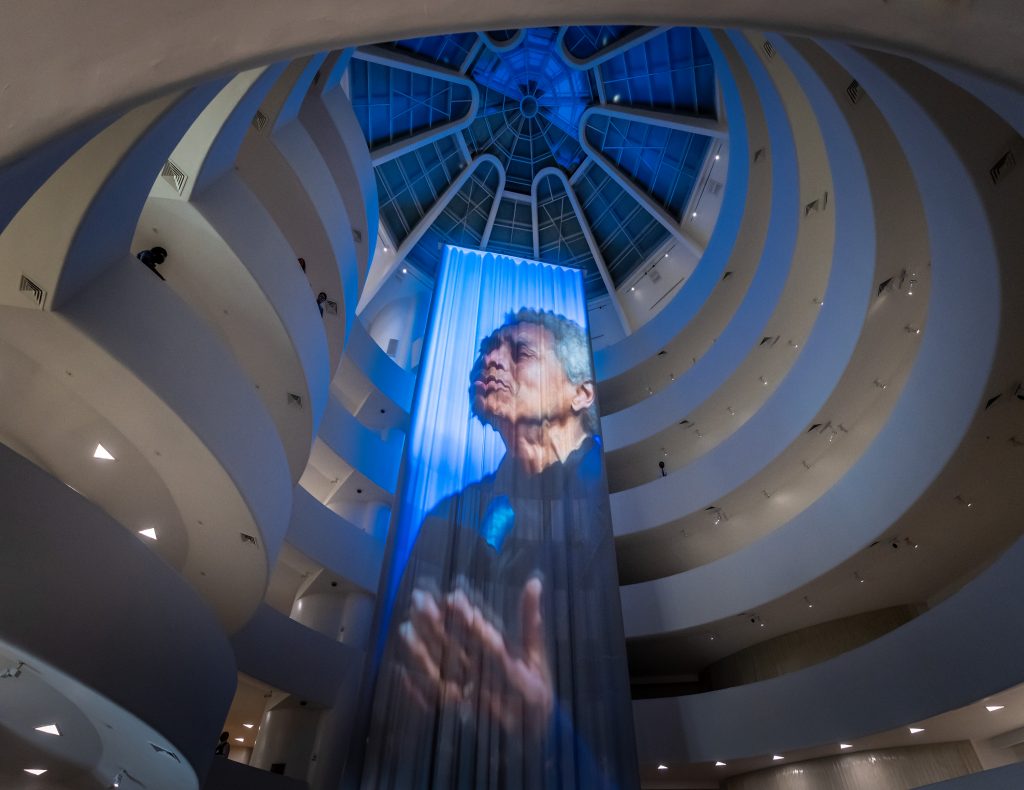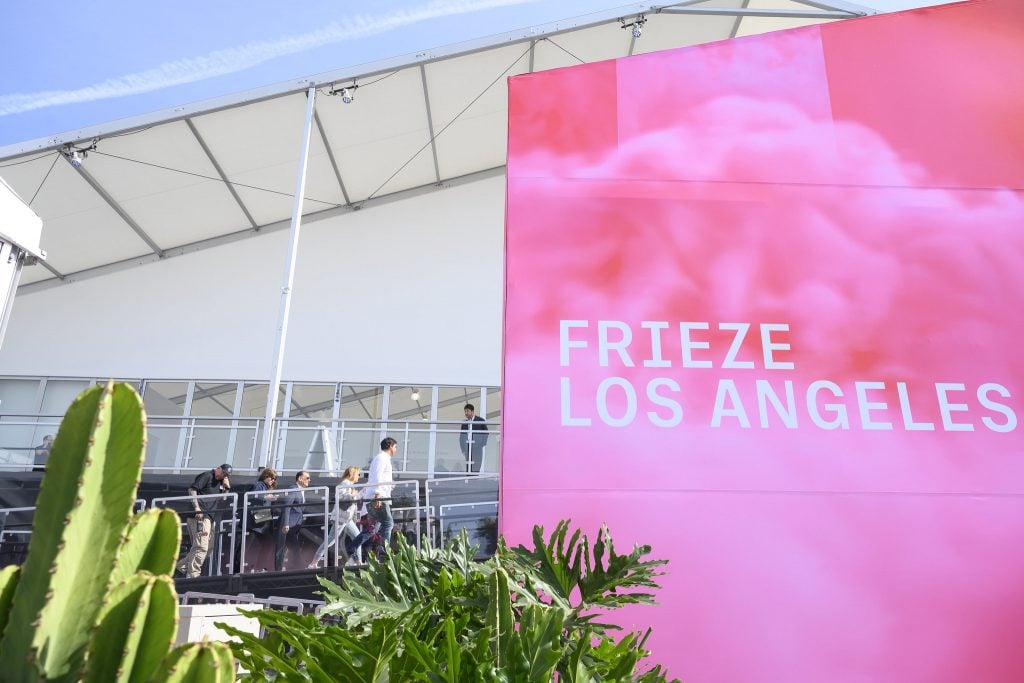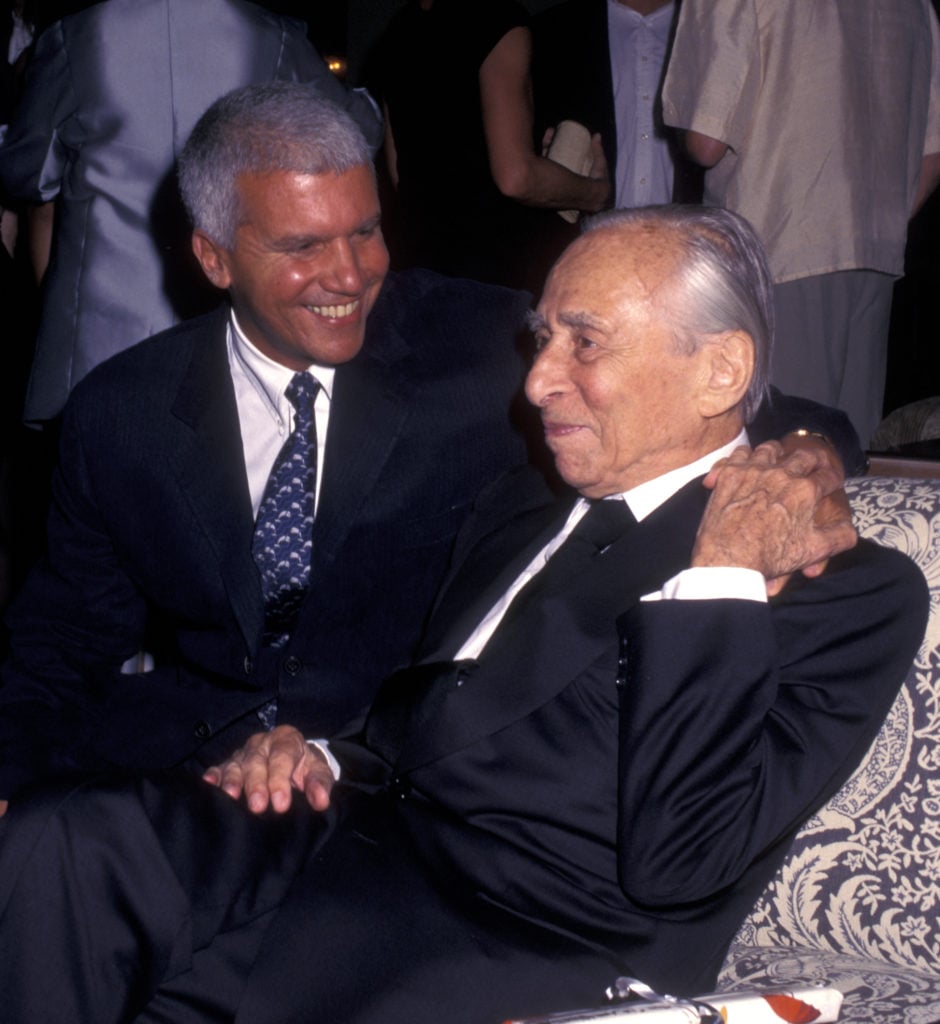The Gray Market
What Have I Learned About the Art Market Since January 2018? A Look Back and a Farewell
As he rides off into the sunset, our columnist looks back on more than a half decade of eerily circular art-business news.

As he rides off into the sunset, our columnist looks back on more than a half decade of eerily circular art-business news.

Tim Schneider

Every week, Artnet News brings you The Gray Market. The column decodes important stories from the previous week—and offers unparalleled insight into the inner workings of the art industry in the process.
This week, a sense of an ending…
If I’ve learned the wisdom of one journalistic adage since I joined the Artnet News staff full-time in January 2018, it’s not to bury the lede. So, in that spirit, this will be the final edition of the Gray Market in this space, as I say farewell to my friends and colleagues here to move onto something new (to be discussed in another place and time).
For context, I first started the Gray Market as a freelancer in Los Angeles in December 2013. That means I’ve been writing under this name for about nine and a half years (technically 9.6, but who besides me is enough of a maniac about specificity to count?). For about five and a half of those years, meaning the majority of the column’s lifespan, its adopted home has been here at Artnet News.
That stretch of time has involved a lot of personal change for me: relocating from the west coast to Brooklyn, watching my parents retire almost 1,000 miles away from where I grew up, making it through the pandemic in good health (without leaving New York), congratulating at least a dozen new friends on becoming parents (y’all have been busy), and meeting my wife (and being smart enough to marry her, obviously), to name just a few milestones. “Bittersweet” is the word I’ve tended to fall back on to describe how leaving feels, but I hope it’s a mark of my development as a writer that I also feel like that word alone is woefully insufficient.
But no one reads this column for extended personal reflections. What you come here for is reflections on the art business! And based on some of the stories this column addressed during my first few weeks on the job, five and a half years turns out to be an eye-opening span of time to look back on the news in this curious, one-of-a-kind industry. Besides just being downright eerie in the trajectory it reveals, this review also cements that even the most expected changes sometimes play out on an unexpectedly long timeline—and not always for the reasons we anticipate, either.
Case in point, my first Gray Market as an Artnet News employee focused on what was felt at the time as a tectonic shift in the business of American institutions: the Metropolitan Museum of Art’s announcement that it would begin charging a mandatory admission fee to non-residents of New York effective March 1, 2018. At that point, the cost for one typical out-of-state adult became $25, a figure that cultural commentators almost universally blasted for its perceived exclusionary effect.
Fast forward to August 1, 2023—the day that I filed the column you’re now reading—and perhaps the biggest art story was the Guggenheim’s announcement that it will raise the price of its adult general admission ticket from $25 to $30. The new price matches the one implemented by the Met in July 2022, as well as by the Whitney Museum of American Art last month. (The Philadelphia Museum of Art also charges $30, while the Art Institute of Chicago charges $32.)
While these latest price hikes prove that the financial struggles of even the U.S.’s most renowned museums have only worsened over the past half-decade, the reasons have shifted, too. Yes, running a top-flight institution continues to get more expensive because of inflation, upkeep, and the pressure to physically expand or renovate the premises in a sector where the bar is always being raised for the appearance of success. Museum leadership nationwide has found few, if any, new levers to pull to try to generate meaningful revenue to cover all of these escalating costs, too.

Wu Tsang Anthem (2021), installation view at the Solomon R. Guggenheim Museum, New York (July 23–September 6, 2021). Photo by David Heald, courtesy of the Solomon R. Guggenheim Museum, New York. ©Wu Tsang.
Yet the shortfalls at major American museums have been exacerbated by two factors that were largely, if not totally, unforeseeable in January of 2018: the unionization wave that has walloped a sector historically content to pay staff less-than-subsistence wages, and Covid’s lasting legacy of reduced attendance at museums. For instance, Zachary Small of the Times relayed that annual visitor tallies at the Art Institute of Chicago are still down roughly 25 percent from pre-pandemic levels, while the Art Newspaper reported earlier this year that the Met’s 2022 attendance total had declined 34 percent relative to 2019. So while major museums have been hiking ticket prices to try to plug budget holes throughout my time at Artnet News, the forces driving the underlying trend have only multiplied.
What other telling stories were on the Gray Market docket in my opening weeks here? Well, in early January of 2018, David Zwirner announced plans to build a new $50 million, five-story gallery in Chelsea designed by Pritzker Prize-winning architect Renzo Piano. Zwirner targeted autumn of 2020 as a tentative opening date for the project. My take focused on the fact that it would also be Piano’s first ever commercial gallery, a natural next step for the museum-ification of the sector.
However, on July 26—less than a week before the publication of the column you’re now reading, and nearly three years past Zwirner’s original ETA—the mega-gallery announced that the collaboration with Piano was no more. Zwirner has instead redirected the $50 million budget into two separate projects in Chelsea: a new 18,000-square-foot gallery on West 19th Street designed by longtime collaborator Annabelle Selldorf, and a 36,000-square-foot office space on West 20th Street that opened last month.
If you’re eager to label this news a turning point in the gallery business’s winners-take-all era, however, I’d recommend pumping the brakes. Zwirner isn’t spending any less money than he planned to; he basically just broke a dollar into two 50-cent pieces. The conversion also apparently netted him an extra 4,000 square feet of space. I do think that the ailing market of 2023 means that serious problems are imminent for many galleries that expanded unnecessarily using the artificial sweetener of pandemic-era loans, but David Zwirner is not the place to look for the fallout.
Yet the original project’s collapse does show how the über-professionalized, big-money art market is more exposed to external complications than ever before. Robin Pogrebin of the Times noted that the canceled, Piano-designed gallery “was part of a larger development by the investor Uri Chaitchik of Casco Development that encountered financial trouble during the pandemic.” Headwinds in the real-estate market can only fragment this kind of alliance if big-money developers see big-money galleries as viable partners in the first place. So even in its kiboshing, the Zwirner headquarters-not-to-be proves that these two adjacent industries see each other as equals to an extent they haven’t previously.
Rounding out the month of January 2018, In Other Words, the Charlotte Burns-helmed media wing of the now-defunct, Sotheby’s-owned advisory firm Art Agency, Partners, relayed rumors that Frieze was planning to augment its London and New York fairs with a new annual expo in Los Angeles in January 2019. While a representative from the fair brand neither confirmed nor denied the reporting at the time, it took only four more weeks for Frieze to officially announce what some observers (myself included) then saw as a risky move (although the new fair’s dates would be in February 2019, not January 2019).

Visitors streaming into Frieze Los Angeles, 2023. Photo: Casey Kelbaugh. Courtesy of Casey Kelbaugh and Frieze.
Now zoom ahead to July 13, 2023—three weeks prior to the publication of the column you’re now reading—when Frieze announced a different kind of stateside expansion: the acquisition of the Armory Show and the pending acquisition of Expo Chicago, two of the U.S.’s longest-running regional fairs. (The latter deal is slated to close later this year.) Although the Armory and Expo will continue operating under their own names with their existing directors now working alongside Frieze’s other fair brass, per a company statement, the transactions mean that four of Frieze’s seven annual events (including the now-firmly-established Frieze L.A.) will take place in the U.S., the world’s most robust art market.
This creates a sharp contrast to the closest analogue we have, MCH Group’s short-lived campaign to acquire significant equity stakes in regional art fairs scattered across multiple countries between mid-2016 and late 2018. Which makes Frieze’s expansion-by-acquisition less a revolutionary development than a new strain of the same consolidation trend that has been playing out in the art business for most of this century, including the last five and a half years.
Even some of the smaller stories I touched on during the opening weeks of my Artnet News tenure have boomeranged back in strange ways in recent weeks. Also in late January 2018, Sotheby’s (then still under the leadership of CEO Tad Smith) announced that it had acquired Thread Genius, a startup described by Tech Crunch as offering “a set of algorithms that can both instantly identify objects and then recommend images of similar objects to the viewer.” In other words, its killer app was machine learning, an important stepping stone on the pathway to the more advanced artificial intelligence that is now an inescapable part of the art-business discourse in the summer of 2023.
Yet almost no one cared about the acquisition at the time. Instead, the central art-tech story of 2018 was the blockchain, mostly as a means of creating either title registries for physical artworks or fractionalized investment opportunities for people who, frankly, I would advise to find better uses for their money. More than four years elapsed between Sotheby’s investment in Thread Genius and the public imagination’s takeover by ChatGPT, DALL-E, and their A.I.-driven competitors in mid-2022. As of my writing, another year has passed since that storming, and it’s an understatement to say we’re still short on clarity about the technology’s likely impact on the arts. This simple math underscores that even allegedly world-changing innovations need more time to take root than it often sounds like in the moment.
Last but not least, in early February of 2018, I called a little attention to a talk at the 92nd Street Y between then-72-year-old mega-dealer Larry Gagosian and longtime associate Glenn Fuhrman, the financier and collector behind the FLAG Art Foundation. To me, the most newsworthy aspect of the chat was this brief exchange:
Fuhrman: I can’t think of any other billion-dollar business in the world that theoretically could disappear because it’s so reliant on a leader. Is your business something that could survive you?
Gagosian: We are working on that… I don’t have children and that’s usually how these legacies are established… But this is something that is really important to me.
There can’t be more than about six people reading this column right now who don’t already know that its publication is only a week removed from that of New Yorker staff writer Patrick Radden Keefe’s endlessly discussed profile of a now-78-year-old Gagosian. Based on Keefe’s reporting, however, it almost sounds as if Gagosian’s thinking about his gallery’s long-term future (or at least his willingness to discuss it frankly) has regressed in the five-plus years since he spent a few words on it onstage with Furhman.

Young buck Larry Gagosian cozying up to Leo Castelli in 1996. (Photo by Ron Galella, Ltd./Ron Galella Collection via Getty Images)
In the piece, Gagosian distances the gallery’s recently formed advisory board from succession planning “per se,” and multiple episodes recounted by others (most notably Issy Wood, who he tried to recruit to the gallery) hinge on Gagosian’s unwillingness to even acknowledge that he’ll one day have to retire, let alone die. In other words, it’s not just that we’re still speculating about the same mega-dealer’s succession plan more than a half decade later; it’s that we’ve arguably moved backwards even as the subject has become more relevant.
Fold these early 2018 stories and their 2023 sequels together, and you’re left with something that only time can make plain: namely, that for all the talk about seismic shifts, unprecedented developments, disruptive technology, and other factors, the art business is still largely riding the same trends captained by the same entities as it was when I started this job five and a half years ago. But the motives for these trends’ persistence haven’t necessarily been predictable. More importantly, they haven’t even necessarily been within the control of the people and businesses that have benefited from them the most.
Whether the impetus was a global pandemic, a cross-industry partnership gone awry, or a strategic pivot perhaps informed by a more ambitious rival’s earlier mistakes, there has been no surer way to play yourself in the art industry than to believe that the business is still small enough to give you and your partners even relative autonomy. At the same time, success still often demands an unshakable belief in yourself and your product, whether that means a new tech or the old standby of hard-charging salesmanship in an eternally subjective trade. It’s a paradox that no one should envy trying to manifest.
In other words, things in the art industry have changed since January 2018. They just haven’t done so at any uniform pace, or for uniformly foreseeable reasons. And even after accounting for the differences, most of the landscape looks similar to when I first started at Artnet News.
In light of all that, my advice is to be skeptical anytime someone tells you they’re going to change anything structural in the medium term. But also keep in mind that the choice to change yourself and your circumstances is still often yours.
‘Til next time, remember: no one’s here for a long time, so at least try to make it a good time while it lasts.